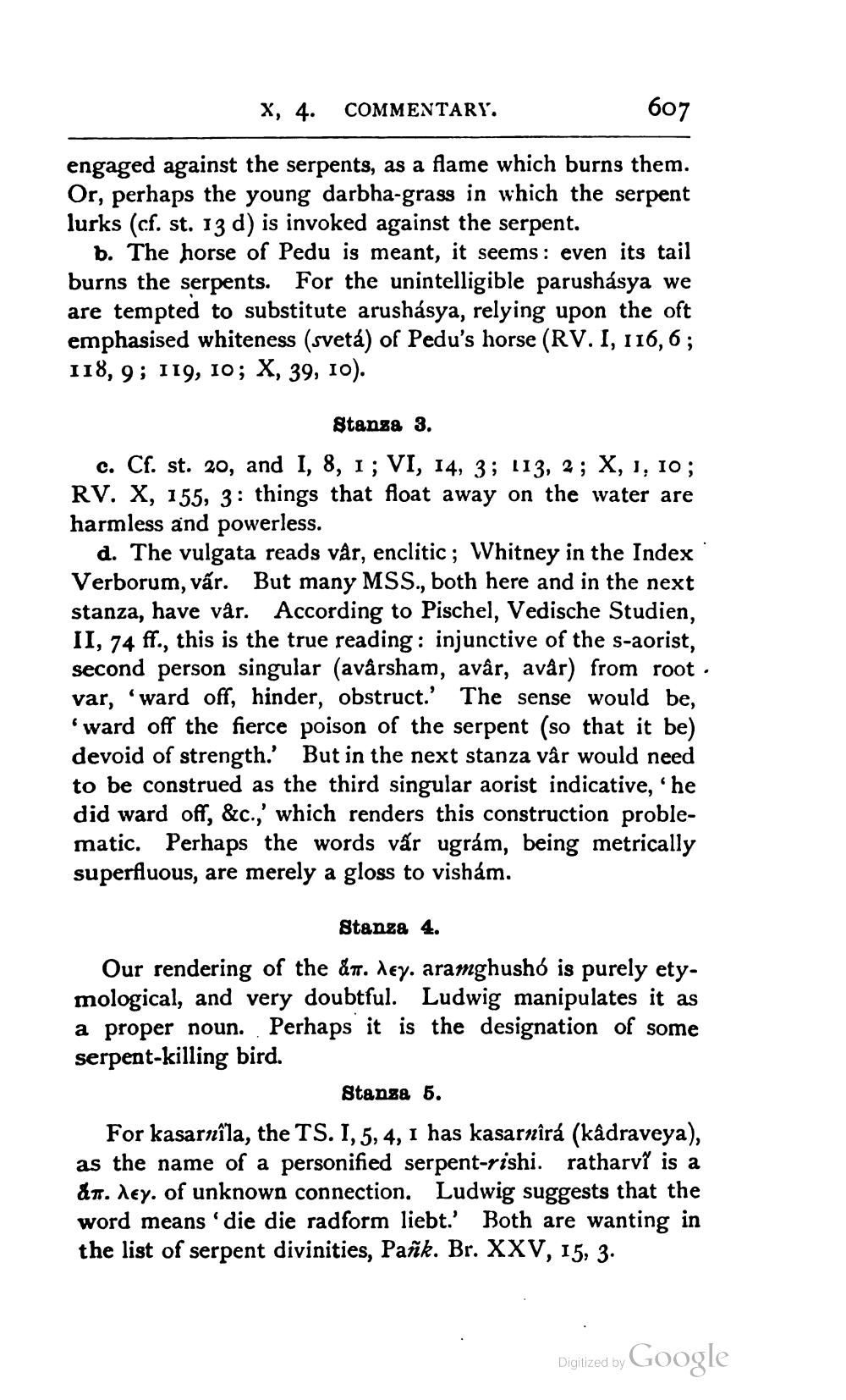________________
X, 4. COMMENTARY.
607
engaged against the serpents, as a flame which burns them. Or, perhaps the young darbha-grass in which the serpent lurks (cf. st. 13 d) is invoked against the serpent.
b. The horse of Pedu is meant, it seems: even its tail burns the serpents. For the unintelligible parushásya we are tempted to substitute arushásya, relying upon the oft emphasised whiteness (sveta) of Pedu's horse (RV. I, 116,6; 118, 9; 119, 10; X, 39, 10).
Stanza 3. c. Cf. st. 20, and I, 8, 1; VI, 14, 3; 113, 2 ; X, 1, 10; RV. X, 155, 3: things that float away on the water are harmless and powerless.
d. The vulgata reads vâr, enclitic; Whitney in the Index Verborum, vấr. But many MSS., both here and in the next stanza, have vår. According to Pischel, Vedische Studien, II, 74 ff., this is the true reading: injunctive of the s-aorist, second person singular (avårsham, avar, avår) from root. var, 'ward off, hinder, obstruct.' The sense would be, 'ward off the fierce poison of the serpent (so that it be) devoid of strength.' But in the next stanza vår would need to be construed as the third singular aorist indicative, he did ward off, &c.,' which renders this construction problematic. Perhaps the words vår ugrám, being metrically superfluous, are merely a gloss to vishám.
Stanza 4. Our rendering of the dr. dey. aramghusho is purely etymological, and very doubtful. Ludwig manipulates it as a proper noun. Perhaps it is the designation of some serpent-killing bird.
Stansa 5. For kasarnîla, the TS. 1,5, 4, 1 has kasarnirá (kâdraveya), as the name of a personified serpent-rishi. ratharví is a år. dey. of unknown connection. Ludwig suggests that the word means 'die die radform liebt.' Both are wanting in the list of serpent divinities, Pañk. Br. XXV, 15, 3.
Digitized by Google




